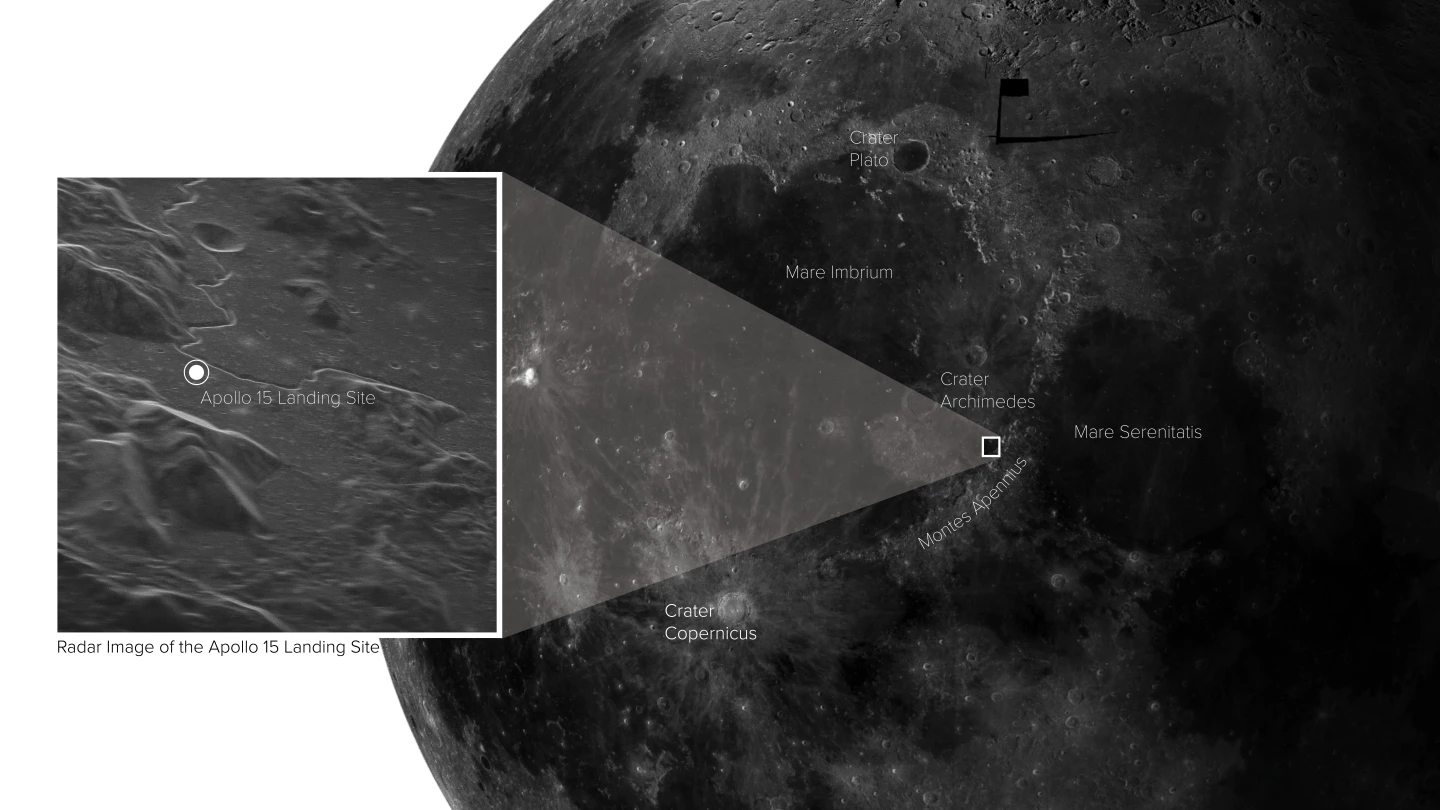Astronomers have captured stunning new high-resolution radar images of the Moon, using an experimental instrument mounted on a ground-based telescope. This proof of concept test paves the way for a more powerful radar telescope that could see as far as Neptune.
The new technology was developed by the Green Bank Observatory (GBO), National Radio Astronomy Observatory (NRAO) and Raytheon Intelligence & Space. The new radar transmitter was fitted onto the Green Bank Telescope (GBT), which allows it to beam radar signals into space. The reflected signals are then captured by the Very Long Baseline Array (VLBA), a series of radio antennas spread across North America, and processed to produce images.

The team conducted the first proof of concept test last November, and the results are incredible. On a large-scale image of the Moon, the instrument was sensitive enough that you can zoom in on specific features on the surface, down to objects as small as 5 m (16.4 ft) wide. Near the landing site of the Apollo 15 mission, for example, an ancient lava tube named Hadley Rille can be clearly seen snaking its way across the landscape, flanked by mountains and passing a crater called Hadley C.
Building on this test, the team now plans to develop a 500-kW radar system that will be able to image objects further out in the solar system. Ultimately, the researchers say, this next-gen radar telescope could be used to capture high resolution images of objects as far away as Uranus and Neptune.
“The planned system will be a leap forward in radar science, allowing access to never before seen features of the Solar System from right here on Earth,” says Karen O’Neil, site director of the Green Bank Observatory.
Source: NRAO





